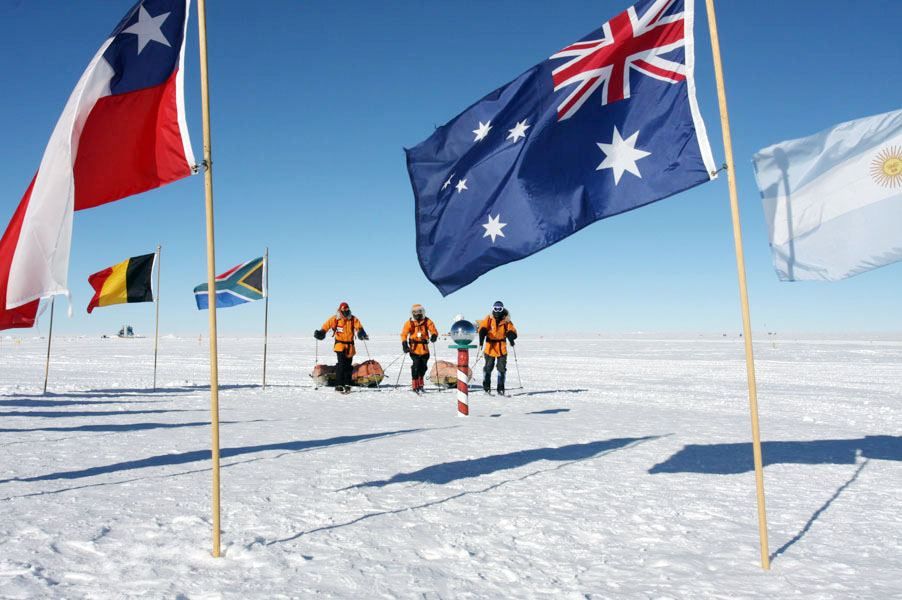Opportunities to visit the South Pole as a tourist or on a private expedition are limited and generally expensive. A number of private companies operate organized tours and support expeditions to the South Pole, both overland and by air, more information on which is available from the non-governmental organization International Association of Antarctica Tour Operators (IAATO).
Tourism in the Antarctic is subject to procedures and regulations adopted by the Antarctic Treaty Parties, including in particular the Protocol on Environmental Protection to the Antarctic Treaty and the Guidance for Visitors to the Antarctic (Antarctic Treaty Recommendation XVIII-1 (PDF)). In addition, expedition members need to comply with the laws of the countries from which they originate and / or of those who are organizing the expedition, and / or of the country from which they depart to Antarctica. The legal situation can be complex for multinational expeditions.
Tour operator interests are represented by IAATO, which plays an important role in the coordination and management of the industry. IAATO was founded in 1991 by seven private companies who were already operating tours within the region. The organization aims to advocate, promote and practice safe and environmentally responsible private sector travel to the Antarctic and presently has a membership of more than one hundred companies from around the globe. IAATO has developed extensive procedures and guidelines for Antarctic tourist activity including: guidelines on numbers of people ashore, site-specific activity guidelines, wildlife watching, pre- and post-visit activity reporting, passenger, crew and staff briefings, previous Antarctic experience for tour staff, and contingency and emergency medical evacuation plans.
The Guidance for Visitors to the Antarctic is based on five basic principles:
- Protect Antarctic wildlife;
- Respect protected areas;
- Respect scientific research;
- Be safe;
- Keep Antarctica pristine.
IAATO compiles annual statistics on tourist activities across Antarctica, including visits to the continental interior and the South Pole , which are presented to the Antarctic Treaty meetings. Tourists are permitted to visit Amundsen-Scott South Pole Station (US) in accordance with procedures that ensure science activities are not disrupted. Visitor numbers to the South Pole have increased substantially in recent years. Tourism at the South Pole must be balanced against the need to protect the environment and preserve the integrity of sensitive science areas, particularly for sites requiring clean air for atmospheric studies or quiet conditions for seismic measurements.

